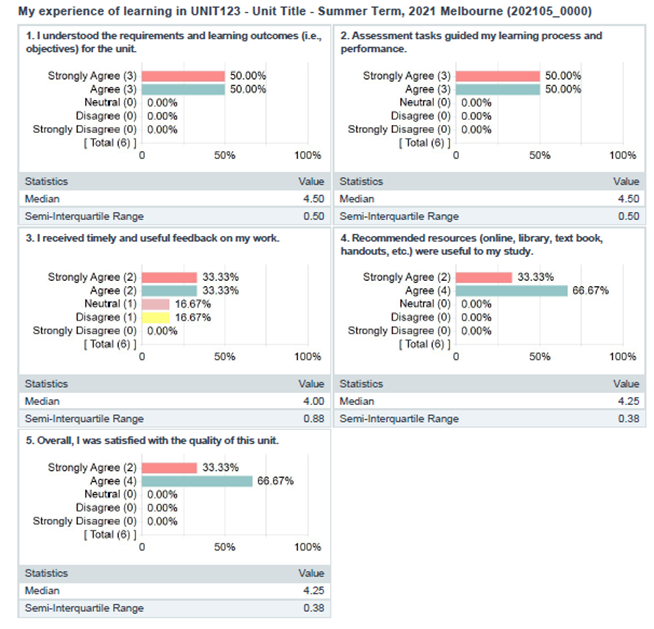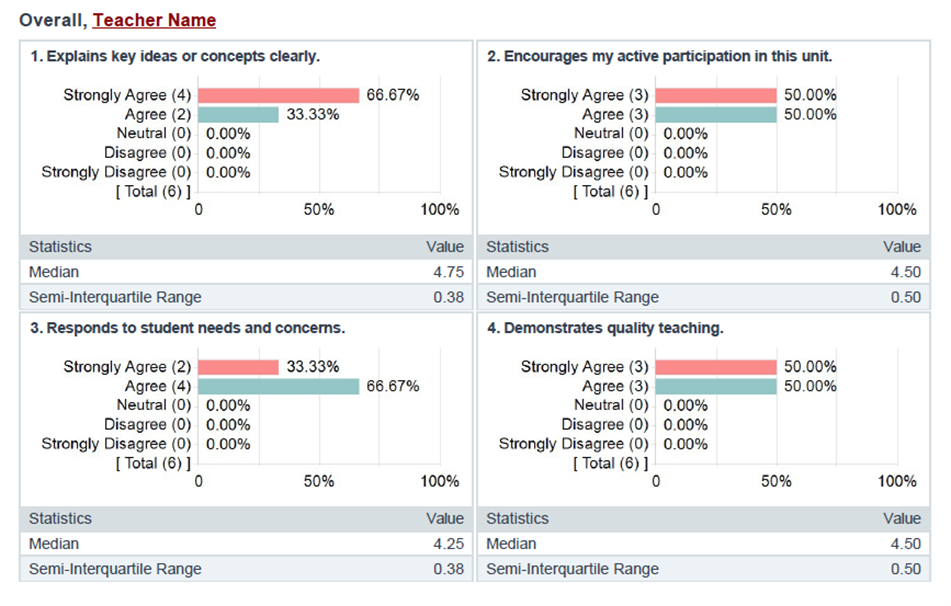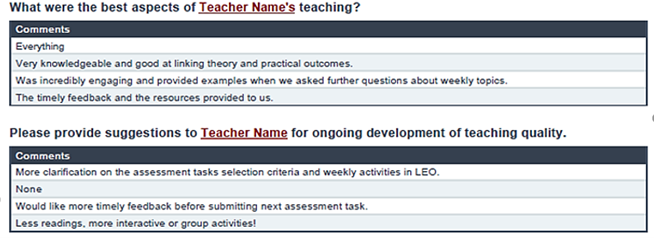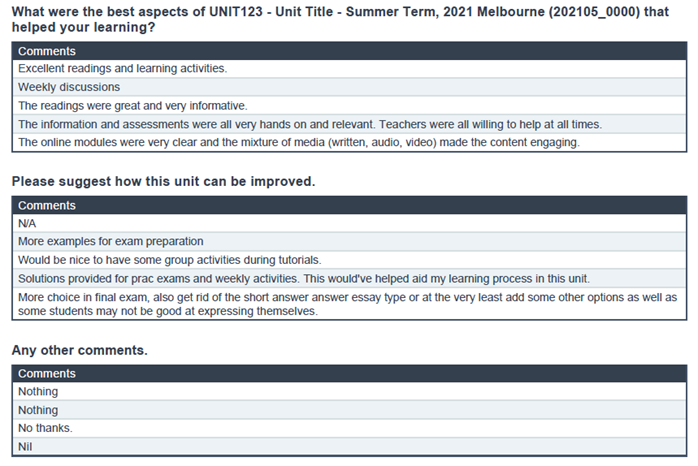The top of the SELT report should look something like the following sample:
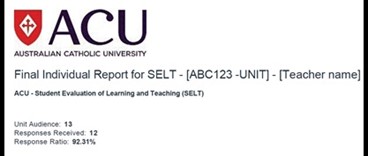
The above Section indicates the unit information including the unit code, unit name and the teacher. It also specifies the survey period and importantly, shows you how many students have completed the survey out of the total enrolled in the unit.
The Tertiary Education Quality and Standards Agency (TEQSA) requires that overall response rate for an institution is 35% or more, for the purpose of considering the data as a reliable evidence of teaching and learning standards. To be able to make use of the statistical summary included with your survey report, it is important that the survey receives a sufficient response rate. A low response rate (especially in small classes) may be a biased sample to represent the whole group, however the views can be an accurate reflection of learning experience for those who provided the feedback.


